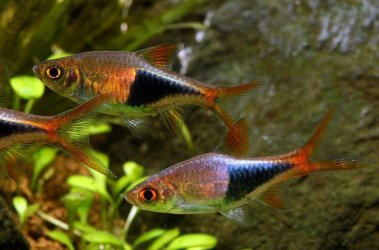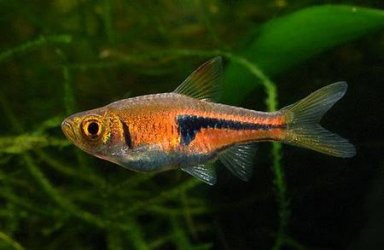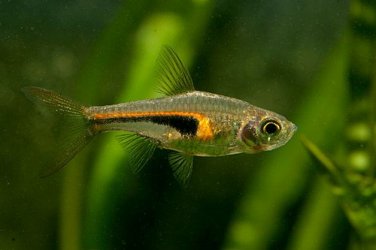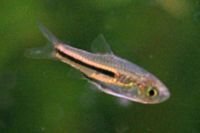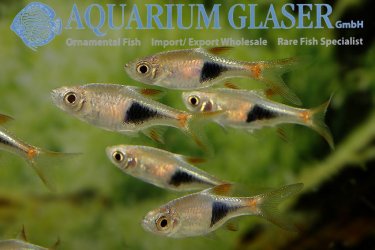The genus
Trigonostigma currently holds five species.
T. heteromorpha is the most common, the Harlequin Rasbora, and slightly larger when mature. The next two,
T. espei and
T. hengeli, are slightly smaller, and sometimes confused (I have seen the latter named as the former in stores) but they are actually quite distinctive when it comes to the "lambchop" black blotch; on
T.hengeli there is a striking copper metallic colouration along the anterior and upper side of the "lambchop." This species is also slightly smaller than
T. espei, and the overall body colouration is rather colourless (sort of a gray and sometimes rather transparent). The fourth species in the genus,
T. somphongsi, has a dark broad stripe [rather than a triangular mark] that runs laterally below an iridescent stripe; this species occurs in the basin and floodplain of the Menam River in Thailand and is very rare.
The fifth species has apparently been in the hobby unnoticed, since it bears a striking resemblance to
T. heteromorpha as the photos below illustrate (Tan, 2020). This "new" species was described in 2020 by H.H. Tan and the paper is available online for free [
http://dx.doi.org/10.26107/RBZ-2020-0058 ].
The monophyly of
Trigonostigma has not been disputed since its inception (see Conway, 2005; Liao et al., 2011), but its phylogenetic position in relation to
Rasbora and related genera is still inconclusive (Mayden et al., 2007; Rüber et al., 2007; Conway et al., 2008; Britz et al., 2009, 2014; Fang et al., 2009; Liao et al., 2010; Tang et al., 2010). These species all have a distinctive black "axe" like blotch.
Photos of all five species follow.


